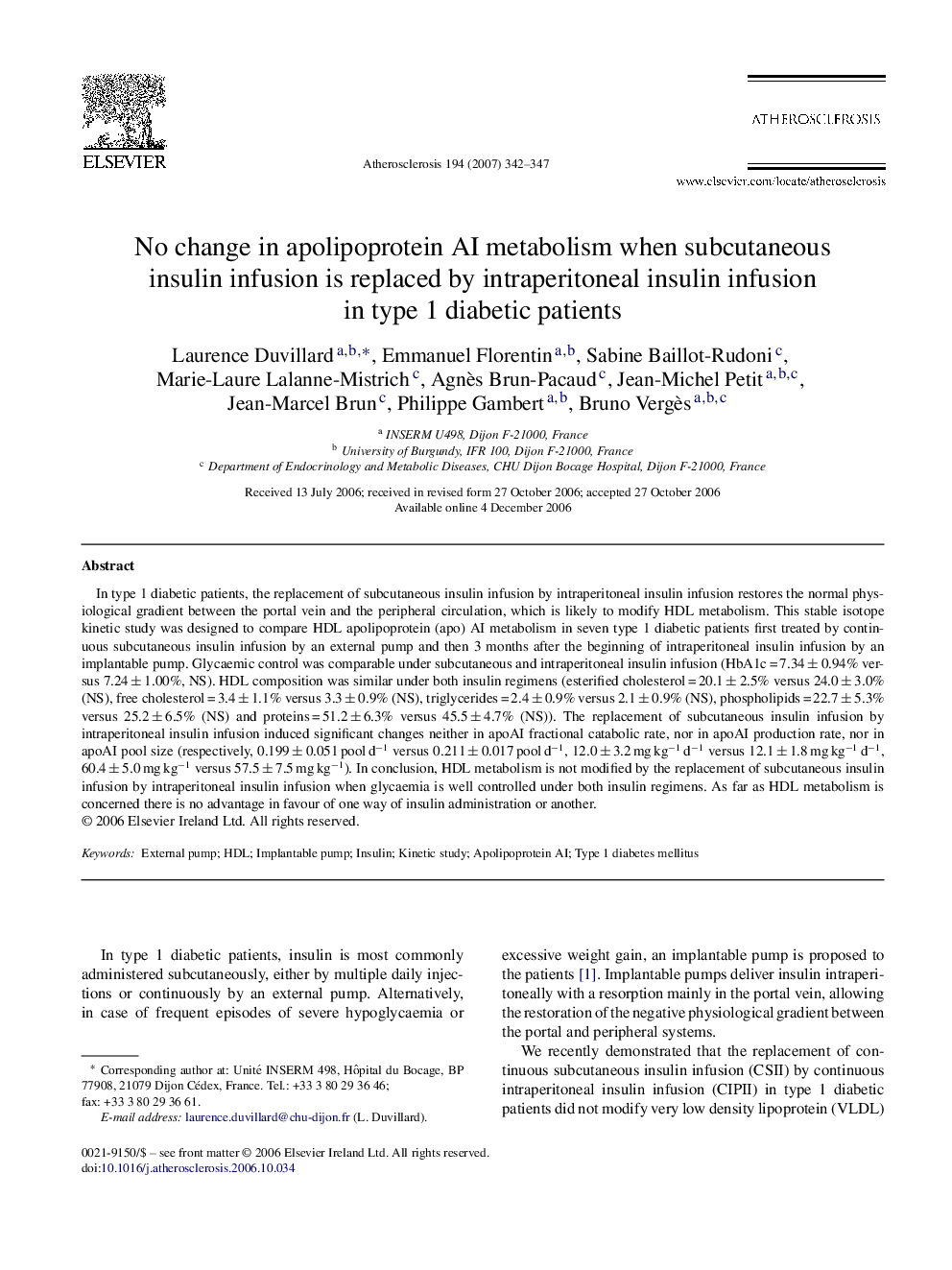| Article ID | Journal | Published Year | Pages | File Type |
|---|---|---|---|---|
| 2894429 | Atherosclerosis | 2007 | 6 Pages |
In type 1 diabetic patients, the replacement of subcutaneous insulin infusion by intraperitoneal insulin infusion restores the normal physiological gradient between the portal vein and the peripheral circulation, which is likely to modify HDL metabolism. This stable isotope kinetic study was designed to compare HDL apolipoprotein (apo) AI metabolism in seven type 1 diabetic patients first treated by continuous subcutaneous insulin infusion by an external pump and then 3 months after the beginning of intraperitoneal insulin infusion by an implantable pump. Glycaemic control was comparable under subcutaneous and intraperitoneal insulin infusion (HbA1c = 7.34 ± 0.94% versus 7.24 ± 1.00%, NS). HDL composition was similar under both insulin regimens (esterified cholesterol = 20.1 ± 2.5% versus 24.0 ± 3.0% (NS), free cholesterol = 3.4 ± 1.1% versus 3.3 ± 0.9% (NS), triglycerides = 2.4 ± 0.9% versus 2.1 ± 0.9% (NS), phospholipids = 22.7 ± 5.3% versus 25.2 ± 6.5% (NS) and proteins = 51.2 ± 6.3% versus 45.5 ± 4.7% (NS)). The replacement of subcutaneous insulin infusion by intraperitoneal insulin infusion induced significant changes neither in apoAI fractional catabolic rate, nor in apoAI production rate, nor in apoAI pool size (respectively, 0.199 ± 0.051 pool d−1 versus 0.211 ± 0.017 pool d−1, 12.0 ± 3.2 mg kg−1 d−1 versus 12.1 ± 1.8 mg kg−1 d−1, 60.4 ± 5.0 mg kg−1 versus 57.5 ± 7.5 mg kg−1). In conclusion, HDL metabolism is not modified by the replacement of subcutaneous insulin infusion by intraperitoneal insulin infusion when glycaemia is well controlled under both insulin regimens. As far as HDL metabolism is concerned there is no advantage in favour of one way of insulin administration or another.
